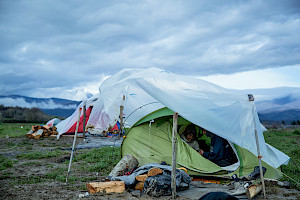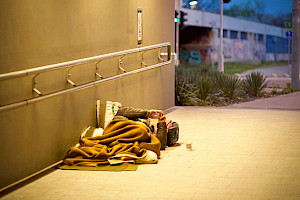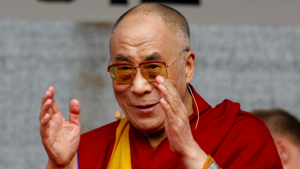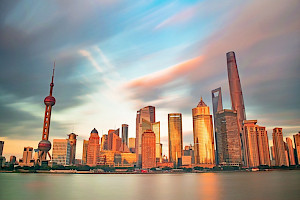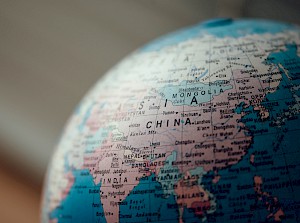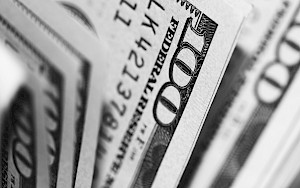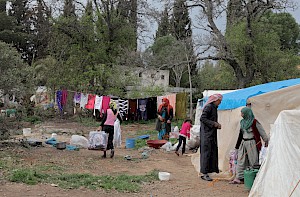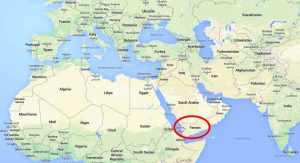The European energy crisis: A self-inflicted wound
October 25, 2022Originally published in The Toronto Star on October 18, 2022 as contributing columnist
“Winter is coming, we know what’s coming with it.” - Jon Snow, Game of Thrones
Freeze or starve. That is the unimaginable choice many Europeans might face this winter. Sanctions meant to punish Russia for its unprovoked war in Ukraine are inflicting equal, if not more severe pain on Europe. Energy costs are one of the key drivers to overall inflation, especially food costs. We are all aware that inflation is going through the roof not only in Europe, but around the world.
But Europeans have an additional problem. Unlike North America where oil and gas is abundant, Europeans have largely relied on Russian natural gas supplies for their energy needs. As a result, in Germany alone, electricity costs have gone up 10-fold since their 2019 lows. All of this is a result of a tit-for-tat response to the West’s sponsored monetary sanctions, giving the Kremlin (via Russian state-owned Gazprom) reason to respond in kind by essentially stopping the flow of gas westwards, leaving European governments scrambling to secure their energy needs. In what is emerging as part of modern warfare, the West weaponized the dollar and in turn, Russian President Vladimir Putin weaponized energy.
One might ask, why didn’t European policymakers see this coming and prepare accordingly? The West’s relations with Russia have been anything but cosy for at least the past eight years when Russia annexed Crimea, and by many accounts even further back. How was Europe so unprepared and so solely reliant on Russian gas supplies?
Europe’s long-term commitment to transitioning to clean energy for environmental and ethical reasons certainly made them more vulnerable, and Russia intentionally made its oil indispensable and affordable as part of a long-term strategy to counter Europe’s green decision-making. But on closer look, it seems like Russia was even better prepared. It likely played a role discouraging European domestic gas exploration while at the same time formulating a plan that would eventually hold Europe hostage in the event of a conflict.
For some background, I spoke to Dr. Alan Riley, senior fellow with the Atlantic Council Global Energy Center, who has advised Central European governments over the last two decades on their supply security issues, particularly in relation to Russian gas. He explained that to protect its virtual monopoly, Gazprom was likely behind some of the anti-shale gas protests that sprung up anytime western energy companies tried to get permits to explore in Eastern European countries.
“It’s important not to taint the EU’s green energy policy with a ‘pro-Russian’ tag,” said Riley. “But it is also true that Moscow has always sought to use public support for green policy to undermine Europe’s energy security.”
Aside from France, which derives 75 per cent of its energy needs from nuclear power, Europe is mostly reliant on Russian gas. Germany transitioned out of coal and nuclear power long ago. Italy benefits from a gas pipeline from Libya and the U.K. has some reserves in the North Sea. But lacking a backup plan, Germany and other Central European countries are left with their proverbial pants down. Not an enviable position with the chill of winter approaching.
Add to that, Germany’s behemoth industrial base, which is the most reliant on Russian gas and therefore the most vulnerable, may be on the verge of collapsing. Several industries including aluminum, glass and chemical are in danger of closing or relocating elsewhere. The resulting damage to employment and supply chains would be devastating.
Putin was well aware of Germany’s vulnerability. And it’s important to note that Germany chose cozy economic relations with Russia for the past decade and played a game of wilful cognitive dissonance between mistrusting Russia while accepting cheap Russian energy. Surprisingly, German policymakers didn’t see the signs of the Kremlin’s moves to soften them up prior to the Russian attack on Ukraine. According to Riley, between 1991 and 2004 there were 40 politically motivated gas “cut-offs” to Ukraine and/or Europe. And then again between 2006 and 2009 and yet again in 2014 and 2015. Why Europe didn’t recognize this obvious pattern is anyone’s guess. The EU took no steps to reduce its supply dependence on Russian natural gas. From the period of the first Russian invasion of Ukraine in 2014, Europe’s natural gas imports rose steadily from 30 per cent to 45 per cent by February 2022. (50 per cent in Germany).
More recently, and likely in preparation for the Ukraine attack, Moscow clandestinely engineered a plan to deprive Europe of gas supplies. While adhering to its long-term supply contracts, in the spring of 2021, it quietly and systematically emptied European gas storage facilities taking them down to five to 10 per cent capacity. By reducing the short-term spot supplies, it not only set the stage for a scarcity of gas but also drove up the price of long-term contracts. Despite Riley’s warnings, it wasn’t until October of 2021 that the EU commission became aware that something was amiss.
“From spring of 2021 energy specialists and energy market analysis firms were asking what is going on with Gazprom? It became increasingly clear as prices increased in April, May, June, and July 2021, that it was Gazprom cutting gas flows across the network of east to west InterContinental pipelines. Despite the price escalation and energy market alarm, EU governments remained unaware and unconcerned,” Riley said.
Riley now predicts that Putin’s next move might be to bankrupt Gazprom in order to create maximum disruption. He likens it to deploying an “energy nuclear bomb” on the European economy. By seizing Gazprom assets, he would increase gas prices and cause economic chaos while making it more difficult to get sued for long-term contracts. In Putin’s thinking, the long-term damage to Russia’s reputation be dammed. He has given up on being a reliable supplier to the west and will turn Russia’s energy export focus to Eastern and Southern clients such as India, China, Japan, and Turkey. The recent sabotage on the Nord Stream 2 pipeline certainly has the fingerprints of someone who is hell-bent on permanently washing his hands of any future reconciliation.
What does Europe do now? Apart from long-term plans to ramp up renewable energy, such as wind and solar as well as pouring billions towards research and production of hydrogen, it is scrambling to find ways to import gas and rapidly building gas degasification plants that turn liquified natural gas (LNG) back into its gas form. Much of that LNG comes from U.S. gas suppliers who in turn produce from shale, the one type of gas Europeans once shunned. The irony in this outcome is somewhat similar to the Saudi’s buying sanctioned Russian oil only to turn around and sell it to the West at higher prices that were driven by sanctions the West created in the first place.
But the bigger problem with building degasification plants is that one needs to secure the LNG in the first place. Most global LNG supply is contracted out years, if not decades in advance. Building LNG plants and additional shipping infrastructure requires years of preparation. Anyone building, say, a $20 billion LNG plant must also know that they have access to 20 years of supply. That means exploring and developing new gas fields is something that doesn’t happen overnight. And therein lies the major problem.
Riley warns, “Europe has first to recognize that this energy supply crisis may well last three or four winters. Winter 2023-24 may be worse than winter 2022-23. This is because for around six months the EU will be able to refill from Russian supplies. It is quite possible in winter 2023-24 we will have no Russian gas. Eventually the U.S. and Qatar for example will be able to ramp up production. This however will take several years. For now, Europe has to focus on demand cuts, switching to alternative fuels and probably closing down energy intensive industries. We are facing a long hard slog to get out of this crisis.”
To help mitigate this calamity, in the short-term Europe must set aside its strict “net zero” policy. As much as I advocate for responsible climate change policy, what will be the point if the European economy collapses. The reality is that it is impossible to stand your ground when the ground under your feet is on fire.
Europe will also need to issue licences and develop its own domestic gas supplies, both on land and the North Sea. In the medium-term, it needs to build its nuclear power capacity. While the risks associated with nuclear power far exceed those of solar and wind power, France’s own experience suggests these can be managed, and that nuclear needs to be part of the energy mix.
Thankfully, we are seeing signs that public opinion is moving in the pro-nuclear direction in Germany and in July, European lawmakers approved a law designating both gas and nuclear as sustainable energy sources for investment purposes. And of course, in the long-term, they, like the rest of the world, must work on fast-tracing renewables like wind, solar, hydrogen and the Holy Grail of clean and sustainable energy, nuclear fusion (not fission).
As for European leaders dealing with Putin going forward, heed the words of philosopher Sun Tzu, “He will win who, prepared himself, waits to take the enemy unprepared.”


